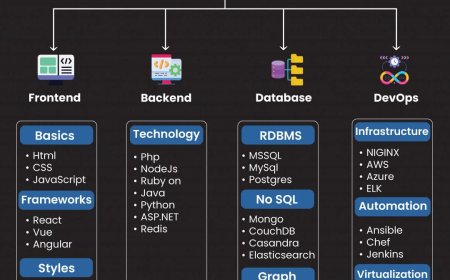John Enos Argues for the Timeless Relevance of the Second Amendment
Explore how John Enos defends the enduring relevance of the Second Amendment, drawing on historical insight and modern-day constitutional interpretation.

John W. Enos, a prominent legal scholar and historian, has contributed significantly to modern constitutional debates through his deeply researched book, The Second Amendment. In it, Enos presents a compelling case for why the Second Amendment remains not only relevant but vital in contemporary society. Rooted in originalist interpretation, the work explores how America's founding idealsespecially those surrounding liberty, resistance to tyranny, and personal responsibilityare inseparably tied to the right to keep and bear arms.
Enoss arguments are not merely emotional appeals to tradition. Instead, he develops a rich historical context, tracing the intellectual and political origins of the Second Amendment. By doing so, he underscores how the founders envisioned an armed populace as a fundamental safeguard against both domestic tyranny and foreign aggression.
Grounding Modern Debates in Historical Foundations
Enos begins with a meticulous review of English common law and colonial-era militia practices, which served as the philosophical bedrock of the Second Amendment. Drawing on primary sources, including writings from Blackstone, Locke, and the Federalist Papers, Enos argues that the right to bear arms was never about hunting or recreational use. Rather, it was a clear check against centralized powera way for citizens to uphold their natural rights when institutional protections failed.
In particular, Enos leans heavily on the writings of George Mason and James Madison. Masons distrust of centralized armies and Madisons insistence that an armed citizenry formed a barrier against tyranny anchor Enoss broader interpretation. His historical exposition demonstrates how the amendment was designed as a constitutional firewall that protects liberty by empowering individuals with the means of self-defense.
Response to Modern Gun Control Policies
John Enos's work is particularly timely in the context of todays polarized debates on gun control. In The Second Amendment, he challenges modern interpretations that attempt to frame the amendment as a relic of a bygone era. Enos notes that while the weapons and threats have evolved, the core principlepreserving personal and collective libertyremains unchanged.
He critiques modern gun control legislation for often misunderstanding or intentionally disregarding the original purpose behind the Second Amendment. Instead of acknowledging the historical function of armed citizenship, many contemporary policies treat firearms solely as instruments of crime. Enos contends that this approach undermines constitutional fidelity and exposes citizens to the risk of state overreach.
In one of the more provocative chapters, Enos juxtaposes recent federal mandates and executive orders with colonial grievances listed in the Declaration of Independence. He argues that erosion of gun rights mirrors patterns of encroachment the founders rebelled against. The implication is clear: the amendment isn't outdatedits a warning and a remedy for political complacency.
Intellectual Rigor and Originalist Scholarship
What separates The Second Amendment from more polemical writings on the subject is its scholarly rigor. Enos is not content to rest on ideology; he builds his thesis with methodical legal analysis and historical documentation. His references to legal precedents, including District of Columbia v. Heller and McDonald v. City of Chicago, support the claim that the judiciary has recognized individual gun ownership as constitutionally protected.
Furthermore, Enos delves into the post-Civil War period and the Reconstruction Amendments, particularly the Fourteenth Amendment, to argue that the Second Amendment was always meant to transcend race, geography, and class. He brings attention to how disarmament was used to oppress freedmen and marginalized groups in the Southa powerful reminder of the amendments civil rights dimensions.
These insights offer a broader view of the amendment as a universal right rather than a narrow privilege. By including these lesser-known historical episodes, Enos strengthens his case that gun rights are not merely conservative talking points but embedded constitutional guarantees with deep moral and legal roots.
Reviews of the Book The Second Amendment by John W. Enos
Across legal, academic, and political circles, the Second Amendment has received acclaim for its clarity, depth, and balance. Many reviews of the book The Second Amendment by John W. Enos praise its ability to elevate the discourse on gun rights beyond partisan divides. Reviewers commend the books use of historical evidence to build a non-inflammatory, yet firm, case for individual rights.
Several constitutional scholars note that Enos avoids sensationalism, choosing instead to rely on original documents and consistent reasoning. Legal historian Dr. Clara Jennings wrote, Enos offers a rare mix of passion and precision. His book is a must-read for anyone serious about the Constitution.
Meanwhile, policy analysts appreciate the books relevance in current legislative debates. Enos does not just look backwardhe brings the founding text into conversation with current events, legal battles, and proposed reforms. That relevance has made the book a frequent reference in courtrooms and legislative hearings.
Importantly, the Second Amendment has found traction not only among conservatives but also among moderate legal thinkers who appreciate its historical integrity. Its reception proves that even in a fractured political climate, rigorous constitutional scholarship can inspire meaningful dialogue.
Preserving Liberty in the 21st Century
Enos dedicates significant sections of the book to exploring how the Second Amendment functions as a living principle rather than a static artifact. He discusses contemporary issues such as civil unrest, the militarization of police forces, and rising authoritarian tendencies worldwide. In these contexts, Enos insists that a well-informed and armed populace is not just a constitutional rightit is a societal necessity.
He also examines how disarming law-abiding citizens in the name of public safety can paradoxically create greater insecurity. For Enos, the right to self-defense is not optional; it is fundamental. He invokes historical instances where disarmament preceded mass atrocities or government abuses, using these as cautionary tales.
Through his writing, Enos challenges readers to consider the broader implications of weakening the Second Amendment. He asks: What other rights become vulnerable once the right to defend them is stripped away?
Second Amendment in Civic Education
One of Enoss enduring goals is to reintroduce constitutional literacy into public discourse He argues that civic education has failed to convey the depth and intent behind the Second Amendment. In schools and universities, the subject is often either glossed over or misrepresented.
To that end, the Second Amendment serves as both a scholarly resource and an educational tool. It includes appendices with primary documents, summaries of major court cases, and discussion questions aimed at sparking thoughtful dialogue in classrooms and community forums. Enos believes that only through better public understanding can the amendments protections be preserved.
Final Thoughts
John W. Enos has crafted a powerful and enduring defense of one of Americas most debated constitutional provisions. In the Second Amendment, he illustrates that the right to bear arms is not merely a historical footnote but a living safeguard rooted in the nations foundational values. His work encourages readers not only to consider what the amendment meant in 1791, but also what





































